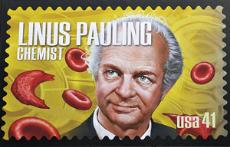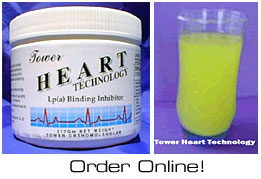- Dissolve atherosclerotic plaques by inhibiting the binding of Lp(a) to the arterial walls
- Lower elevated Lp(a) in ascorbate-deficient individuals
- Relieve the pain of angina pectoris
- Reduce the likelihood of blood clotting, heart attack, and stroke
- Strengthen the cardiovascular system by increasing the formation of collagen
- Increase heart and other muscle strength and stamina
- Reduce blood and tissue lipids (fats) and cholesterol
- Replace the missing "stress" hormone
- Increase antioxidant intake and slow aging
- Boost immunity against bacterial, viral, and fungal diseases including antibiotic-resistant strains
- Promote overall health and the feeling of well-being
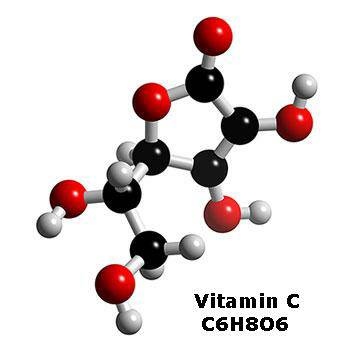
The Pauling Therapy for Heart Disease - What is it?
The Pauling Therapy Supplements - Where can I get them?
The Benefits of the Pauling Therapy - What are they?
The Pauling therapy is a combination of the specific orthomolecular nutrients - ascorbic acid, lysine and proline - that are proven to combat coronary heart disease at the specific dosages recommended by Linus Pauling. The confirming scientific experiments of Dr. Pauling were published in the Proceedings of the National Academy of Science (1990, Vol 87, pgs 6204-6207) and Dr. Pauling was granted a patent on his formula.
 | ||||
"If you are at risk of heart disease, or if there is a history of heart disease in your family, if your father or other members of the family died of a heart attack or stroke, or if you have had a mild heart attack yourself, then you had better be taking vitamin C and lysine." British Journal of Optimum Nutrition, Linus Pauling Interview, 1994
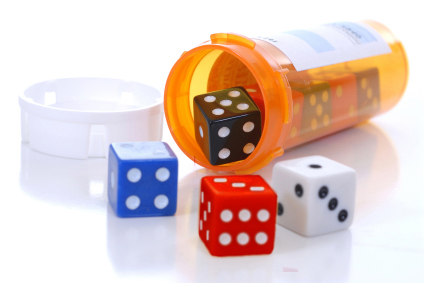
In the United States alone 50 million people are currently diagnosed with one or more of these conditions. Most are gambling on cardiovascular health with conventional medical treatment with little relief of their disease or symptoms.
There is a proven solution for cardiovascular disease, according to Dr. Linus Pauling, who in 1992 announced:
All of the ingredients recommended by Linus Pauling for treatment of occlusive cardiovascular disease can be found separately as pills in the vitamin aisle of any drug store, and the detailed dosing regimen is outlined in our new book, Practicing Medicine Without a License? The Story of the Linus Pauling Therapy for Heart Disease.
For those who tire of taking vitamin pills by the handfuls, however, Tower Orthomolecular Labs has formulated a line of powdered drink mixes based on the Pauling therapy protocol that can be combined with water or juice. Each formula - CardioAde®, Heart Technology™, Ascorsine-9®, and Anti-Aging Technology™ - supplies the equivalent of more than 16 ordinary vitamin pills and amino acid capsules in a pleasant-tasting drink.
All Tower formulas are completely non-toxic and designed to remain safe at high dosages. There is no known lethal dosage level for either vitamin C or lysine. Tower's were the first formulas on the market to contain the nutrients at the dosages that Linus Pauling recommended based on the scientific research, discoveries, and inventions of Pauling himself, as well as Dr. Matthias Rath and those pioneers in vitamin C and cardiovascular health research who preceded them. When taken together consistently, vitamin C, lysine and proline at the doses recommended by Pauling work as a highly effective Lp(a) cholesterol binding inhibitor.
The successful results outlined in the book in Chapter 8, Important Case Studies, were achieved by heart patients using the Tower formulas Heart Technology™ and Ascorsine-9®.
Disclaimer: USE TOWER ORTHOMOLECULAR LABORATORIES INC. PRODUCTS AT YOUR OWN RISK. The Food and Drug Administration (FDA) has not evaluated any statements on this Web site. Tower Orthomolecular Laboratories, Inc. does not make health claims for its products. Tower Orthomolecular products are not intended to diagnose, treat, or cure any disease. Tower is not responsible for independent third parties who may otherwise represent efficacy of its products. These individuals are not our agents and do not have our permission. Unsatisfactory products sold in the USA may be returned for a full refund.
Copyright 2008 Heart Disease Cause and Cure - All Rights Reserved
Linus Pauling - Who was he?
Born on February 28, 1901 in Portland, Oregon, Linus Pauling received his Bachelor's degree from Oregon State College in 1922, his Doctorate from the California Institute of Technology in 1925, and honorary degrees from universities in seven countries and numerous awards for his work in science and humanitarianism. A multifaceted genius with a zest for communication, for years Dr. Linus Pauling was probably the most visible, vocal, and accessible American scientist. He was a master at explaining difficult, even abstruse, medical and scientific information in terms understandable to intelligent lay persons.
Dr. Pauling wrote numerous articles and books for the general public — on science, peace, and health. Popular books in which Linus Pauling detailed his nutritional recommendations are Vitamin C and the Common Cold, Cancer and Vitamin C (with Ewan Cameron, M.D.), and How to Live Longer and Feel Better. His landmark book, The Nature of the Chemical Bond, is frequently cited as the most influential scientific book of the 20th century.
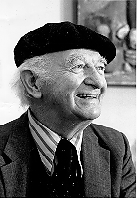
Dr. Linus Pauling is the only person ever to receive two unshared Nobel Prizes — for Chemistry (1954) and for Peace (1962). The British magazine New Scientist ranks Linus Pauling among the 20 most influential scientists in history, in company with Darwin, Einstein, Galileo and Newton. Over the seven decades of his scientific career, Pauling's research interests were wide-ranging and eclectic. He made important discoveries in many different fields of chemistry — physical, structural, analytical, inorganic, and organic chemistry, as well as biochemistry. In both theoretical and applied medicine he made important discoveries in genetic diseases, hematology, immunology, brain function and psychiatry, molecular evolution, nutritional therapy, diagnostic technology, statistical epidemiology, and biomedicine. Much of Pauling's lifework combined the dedication and knowledge of the scientist with a deep commitment to humanitarianism that espoused his own operating ethical principle of the "minimization of suffering." Pauling also shared a devotion to pacifism with his friend, Albert Einstein.
When Pauling died on Aug. 19, 1994 at the age of 93 years, the world lost one of its greatest scientists and humanitarians and a much respected and beloved defender of civil liberties and health issues. He left us, however, his last great scientific contribution to the world - the only known cure for heart disease.
Dr. Pauling was honored posthumously in April 2008 with a Nationally distributed United States Postal Service stamp that features his likeness. "We are pleased to honor Linus Pauling as one of the top twenty scientists in the world," said Corvallis, Oregon Postmaster John Harrington.
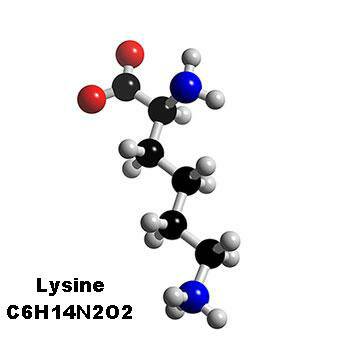
Linus Pauling specifically recommended very high, generally equal oral doses of vitamin C and the amino acid lysine, now known as the Pauling therapy (with the addition of proline), in his Unified Theory lecture (available on video) for successful prevention and reversal of coronary artery blockages.
Coronary artery plaques are comprised in large part of the "sticky" cholesterol known as Lp(a), which has been proven ten times more likely to cause artery disease than the LDL cholesterol that your doctor normally tests for in a cholesterol panel. Doctors seldom test for Lp(a) levels because the Lp(a) connection to heart disease risk has been downplayed despite scientific evidence, medical journal reports, and media reporting that Lp(a) increases heart attack risk, and because there are no current pharmaceutical drugs proven to lower Lp(a).
However, it is well established that Lp(a) is attracted to the amino acid lysine and therefore binds to the lysine found in a protein in artery walls via the Lp(a)'s binding sites when the artery, weakened from a lack of collagen due to a vitamin C deficiency, has formed weak spots, or lesions, and requires reinforcement.
When taken together at the specific dosages recommended by Linus Pauling, the Pauling therapy orthomolecular ("right molecule") nutrients have been scientifically shown to:
 | ||||
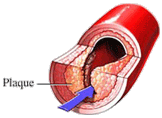
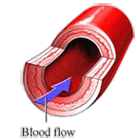
Coronary artery with Lp(a) plaque that forms when the artery is deficient in collagen from a chronic vitamin C deficiency.
Coronary artery restored to health with the Lp(a) binding inhibitors vitamin C, lysine and proline and no longer in need of reinforcing plaque.
" . . . we can get almost complete control of cardiovascular disease, heart attacks and strokes by the proper use of vitamin C and lysine. It can prevent cardiovascular disease and even cure it. If you are at risk of heart disease, or if there is a history of heart disease in your family; if your father or other members of the family died of a heart attack or stroke . . . or if you have had a mild heart attack yourself, then you had better be taking vitamin C and lysine.”
Now 18 years later, medical ‘science’ has failed to acknowledge, investigate, or publish a single study on Linus Pauling’s theory, and conventional cardiology is still no closer to curing heart disease and in fact may be causing an increase in heart disease because of the Lp(a)-increasing side effect of statin drugs.
In Pauling's last private telephone interview with reporter Peter Barry Chowka, conducted on April 9, 1994, he expressed his dismay that this theory of heart disease wasn't formulated and the disease eradicated decades earlier, stating:
The new book, Practicing Medicine Without a License? The Story of the Linus Pauling Therapy for Heart Disease, explains the Pauling therapy, details its history, includes testimonials from former heart patients who overcame their disease using the Pauling therapy, and makes powerful recommendations on how to obtain the levels of the orthomolecular nutrients recommended by Dr. Pauling for reversing and preventing atherosclerosis. The book also provides information on which U.S. laboratories reliably measure Lp(a) cholesterol and how to obtain an accurate test. It should become the handbook of every human being alive, cardiac patient and non-cardiac patient alike, for attaining a heart disease-free state.
For a limited time the book's co-author, Sally Snyder Jewell, is also available to answer questions about the Pauling therapy for heart disease. Contact Sally via e-mail, or by phone toll free at 877.753-9355.
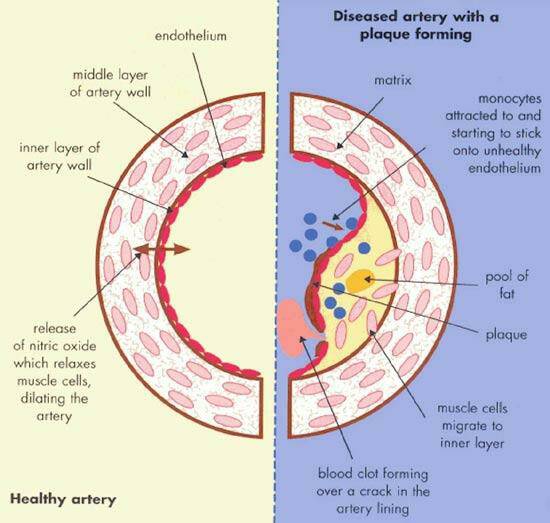
More than 650 documented scientific studies have proven that a lack of ascorbic acid (vitamin C) is the key risk factor for heart disease. Occlusive coronary artery disease (atherosclerosis) is a form of scurvy that occurs when the body is deficient in ascorbic acid (vitamin C) and subsequently the collagen that is made only in the presence of high levels of vitamin C.
Without vitamin C, and hence collagen, the lining (endothelium) of the coronary arteries (the points of the greatest mechanical stress and force from the heartbeat) begins to deteriorate and develop weak spots (lesions). The body's response to the weakening arteries is to deposit plaque to reinforce the arteries, much like a scab on a skin wound. Years of ongoing deficiency and resultant plaque deposits results in artery blockages that prevent adequate blood flow to the heart and ultimately cause a heart attack.
WHAT CAUSES ARTERY BLOCKAGES?
WHAT REVERSES ARTERY BLOCKAGES?
WHERE CAN I LEARN MORE ABOUT REVERSING ARTERY BLOCKAGES WITH THE PAULING THERAPY?
According to the twice Nobel prize winner Pauling, "Knowing that lysyl residues are what cause Lp(a) to get stuck to the wall of the artery and form atherosclerotic plaques, any physical chemist would say at once that the thing to do is put the amino acid lysine in the blood to a greater extent than it is normally. . . you can take lysine, pure lysine, a perfectly non-toxic substance in food, as a supplement, which puts extra lysine molecules in the blood. They enter into competition with the lysyl residues on the walls of arteries and accordingly work to prevent Lp(a) from being deposited, or even will work to pull it loose and destroy atherosclerotic plaques." Linus Pauling, Journal of Optimum Nutrition, Aug 1994.
Most animals make large amounts of vitamin C in the liver, and those that do rarely suffer from coronary artery blockages. Because humans lack the ability to make vitamin C in the liver as most animals can do, oral intake of vitamin C at high levels (far greater than the U.S. RDA) is required by the body in order for it to make adequate collagen for vascular health. Like humans, guinea pigs are also unable to make vitamin C and were demonstrated in laboratory studies nearly 50 years ago by Canadian doctor George Willis, and later in 1989 by Drs. Pauling and Rath, to develop and die from artery blockages like humans when vitamin C was withheld from their diet. Willis' landmark Reversibility experiment clearly showed that early atherosclerosis is reversible simply by increasing vitamin C to optimal levels.
Today more than 1,500 scientific studies have investigated the role of Lp(a) in heart disease, and most have confirmed Pauling's insight. We also know that our chances of heart attack or stroke are 70 percent greater when Lp(a) is elevated, according to Oxford research published in Circulation, September 2000. It is almost impossible, however, to get enough of the critical, heart-healthy nutrients ascorbic acid and lysine, also referred to as Lp(a) binding inhibitors, recommended by Pauling from one's diet. Read the September 2000 Dallas AP report, Lipoprotein Ups Heart Attack Risk, based on the Oxford University findings published in the American Heart Association journal Circulation.
For accurate testing of Lp(a) cholesterol, Heart Disease Cause and Cure recommends the use of a laboratory in the U.S. that accurately measures Lp(a) cholesterol for determining heart attack risk. More information about Lp(a) testing by this lab can be found in the book, Practicing Medicine Without a License? Heart disease risk can be almost completely eliminated with the use of the Lp(a) test for determining Lp(a) cholesterol level along with continued use of Pauling therapy Lp(a) binding inhibitor formulas for lowering Lp(a) to a safe level and preventing continued plaque deposits.
Dr. Linus Pauling
1901-1994
(Full Text)
". . . I have trouble understanding why somebody interested in heart disease didn't think of it 20 or 30 years ago when it was accepted by cardiologists that the primary cause of atherosclerosis and heart disease is a lesion in the wall of an artery in a region of stress. So I asked myself two or three years ago, 'Why should there be a lesion in the wall of the artery?' Animals don't have these lesions in regions of stress. Well, you have the lesions because arteries are weak. Why are they weak? Ordinarily, animals' arteries are strengthened by the deposit of collagen. And you can't make collagen without using up vitamin C. Humans don't get enough vitamin C, so their arteries are weak. And then a lesion forms, followed by the other stages of developing heart disease. THEREFORE, DEFICIENT INTAKE OF VITAMIN C IS A PRIMARY CAUSE OF CARDIOVASCULAR DISEASE.
$19.95
1-877-753-9355


